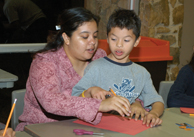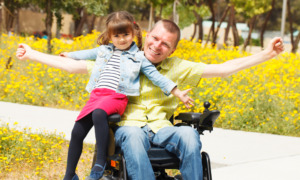 Kansas City, Mo.
Kansas City, Mo.
(816) 756-1950
www.campfireusa.org
Objective: To provide fun, enriching small-group experiences for youth with their families.
In a Nutshell: Camp Fire USA provides each community family club (CFC) with a curriculum focused on service, personal and skill development, and outdoor education and leadership. The youth and their families meet regularly in neighborhood spaces (such as schools, community centers or church halls) to share meals, do group activities or provide volunteer work. The clubs are typically sponsored by schools, faith-based organizations and after-school programs.
When It Began: CFC grew from a 1999 priority shift by Camp Fire, which sought to include family members in more youth programs. Camp Fire’s community needs assessments spotlighted the need for families to spend more time together and to share a meal more often.
Staff: The program is initiated by a Camp Fire USA council or chapter in cooperation with a community partner. A site coordinator works with Camp Fire staff to market the program to families. Senior program consultant Kathy Hermes oversees the effort nationally.
Obstacles: “Identifying key lead families that are willing to make an initial commitment to the club can be time-consuming,” Hermes says. “It’s important to have a community champion and core group of families identified before the program begins, to assure that enough people will attend each meeting.” This is solved, she says, by identifying adults in the community whom Camp Fire can groom to eventually lead the program as volunteers.
Cost: A club can operate on as little as $500 a year, with volunteer leaders and food provided by the families. With grants, many clubs are able to offer access to basic social services, field trips and meals. Hermes has heard of annual budgets of up to $5,000.
Who Pays: The Annie E. Casey Foundation supports councils that demonstrate success. Families generally pay an annual fee, and additional support is secured by councils or chapters through foundations, the United Way and other sources.
Youth Served: About 75 clubs operate in 25 states. Most are in “urban areas that typically have not participated in youth development activities,” Hermes says. The program has been most successfully replicated in Hispanic neighborhoods and among families with home-schooled children.
Youth Turn-On: Camping excursions and field trips.
Youth Turn-Off: Having their parents around. “It is important for the youth to have their own time together during the meeting,” Hermes says.
Research Shows: Sixty-one percent of club youth surveyed last year said the clubs made their families stronger, and 81 percent reported a greater understanding of different cultures, religions or people with disabilities. Eighty-two percent of adults surveyed said they have learned new skills that help with family life.
What Still Gets in the Way: Figuring out the best way to assist local leaders through the early stages of developing a club. “We have found that once a group establishes itself with its own leadership, it is likely to sustain itself over time,” Hermes says.






























